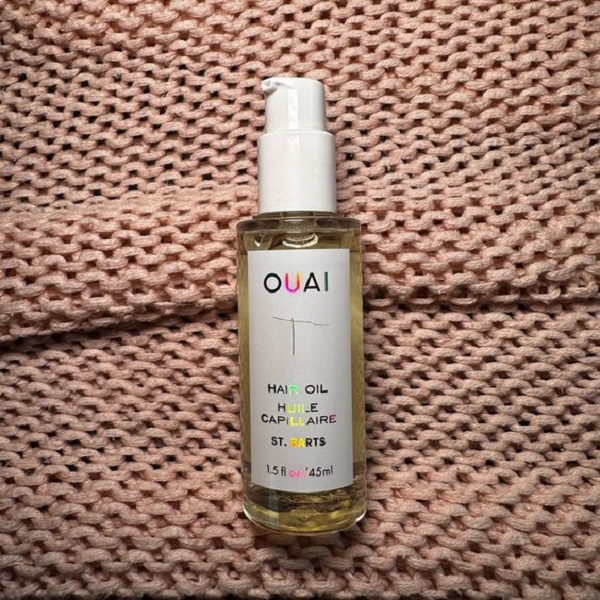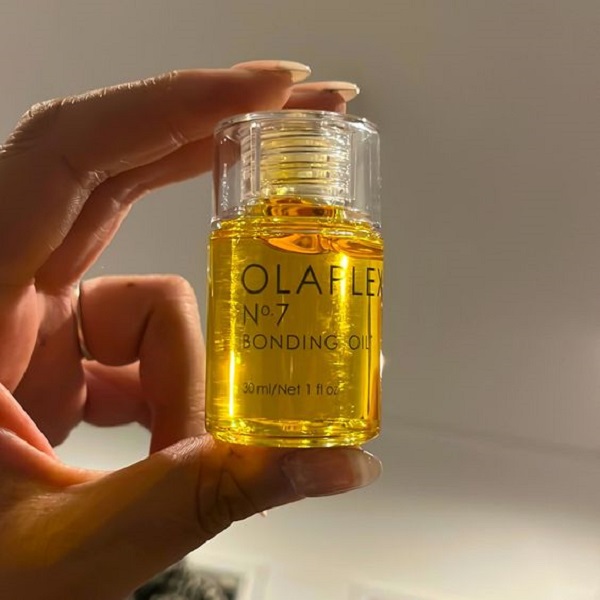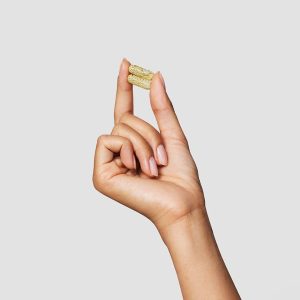
Understanding the Benefits of Hair Oiling
Hair oiling provides multiple benefits for your hair and scalp. Regular oil massages can improve blood circulation, which is vital for stimulating hair growth and providing nutrients to the hair follicles. Proper circulation also means a healthier scalp, reducing issues like dryness and flakiness. How long to leave hair oil in?
Not only does oiling help in hydrating and nourishing the hair, but it also strengthens the strands from the roots to the tips. This can minimize breakage, leading to less hair fall and aiding in the maintenance of thick, lustrous hair. Oiling acts as a natural conditioner, giving your hair a smooth and shiny appearance. It’s also a great way to protect your hair from damage caused by environmental factors, such as pollution and harsh weather conditions.
Beyond these physical benefits, the act of massaging oil into your scalp can be incredibly relaxing, helping to alleviate stress and potentially improve sleep quality. It’s a soothing ritual that offers both mental and physical relief. With the right techniques and duration, hair oiling can transform the health and beauty of your hair.
Selecting the Right Hair Oil for Your Hair Type
Selecting the ideal hair oil is crucial for obtaining its maximum benefits. Your hair type dictates which oil is best. For dry, brittle hair, oils like coconut oil can deeply moisturize. It is rich in lauric acid, which penetrates and nourishes hair. Oily hair types might benefit from lighter options such as jojoba oil. It mimics the scalp’s natural oils, preventing overproduction.
For those seeking growth, rosemary and peppermint oils can stimulate the scalp. Mix them with a carrier oil like grapeseed for safe application. Curly or frizzy hair may find argan oil helpful. It tames frizz and adds shine without weighing hair down. Damage from color or chemical treatments calls for oils like almond oil. It provides vital nutrients and helps repair damage.
To hit the right balance, moderation is key. Don’t drench your hair in oil. Start with a small amount and add as necessary. This approach ensures your hair absorbs the oil without residue. Remember, the correct oil and the right amount will enhance hair health effectively. Use knowledge of your hair type and the properties of various oils to make an informed choice.

Best Practices for Applying Hair Oil
To leverage the full benefits of hair oiling, one must follow certain best practices. Interestingly, the application process is just as crucial as the oil you choose. Below are guidelines to ensure you apply hair oil effectively:
Start with a Clean Scalp
Before applying oil, ensure your scalp is clean to allow optimal absorption. Any residue can form a barrier, hindering the oil’s effectiveness.
Use Warm Oil for Better Penetration
Slightly warming the oil can enhance its absorption into the scalp. A lukewarm temperature is recommended as it is gentle on the scalp and opens up pores without causing discomfort.
Section Your Hair
Divide your hair into sections to distribute the oil evenly. This ensures that the oil reaches your entire scalp and each strand.
Apply Oil to the Roots First
Begin at the roots and massage gently. The motion should not be too vigorous to avoid hair breakage. Focus on ensuring the roots and scalp are well oiled before moving to the lengths.
Use Your Fingertips for Massage
Massage your scalp with your fingertips in a circular motion, which helps improve circulation and promote hair growth.
Don’t Overapply
It is unnecessary to saturate every strand. Less is more when it comes to oiling, as too much can weigh down your hair and require excessive shampooing later.
Comb Through After Application
After oiling, use a wide-tooth comb to help distribute the oil through your hair, detangle, and prevent it from clumping together.
Following these practices will make your oiling routine more effective and pleasant, enhancing the overall health and appearance of your hair.
Determining the Optimal Duration for Hair Oiling
Knowing how long to leave hair oil in is as important as selecting the right oil. The duration can impact the effectiveness of the oiling process, and this varies with the type of oil used, and individual hair needs.
For general maintenance, leaving the oil in for about one to two hours is adequate. This timeframe allows the oil to penetrate the hair shafts and moisturize the scalp. However, if you’re using the oil as an intensive treatment, overnight oiling might be beneficial. But this should be done with caution to avoid clogging pores or oil buildup.
Hair type also plays a significant role in determining the duration. Oily scalp types may require a shorter oiling time to prevent excess grease. On the contrary, dry or damaged hair might benefit from a longer duration to deeply restore moisture.
Another factor to consider is your daily routine. Those with a busy schedule may opt for a quick 30-minute oiling before a shower. Always remember, the quality of treatment within the right duration is more important than the quantity of oil used or the time spent.
If you’re planning to leave the oil overnight, it’s best practice to do a patch test first. Start with a small amount; see how your hair and scalp respond before committing to a full overnight session.
In conclusion, while there’s no one-size-fits-all answer to the ideal oiling time, start with an hour and adjust based on your hair’s response. With these tips in mind, you’re on the path to making the most out of your hair oiling ritual.

Common Mistakes to Avoid When Oiling Your Hair
How long to leave hair oil in? When applying hair oil, it’s easy to make mistakes that can reduce its benefits. Avoiding these common pitfalls will help maximize the effectiveness of your hair oil treatment. Here are the top mistakes to be aware of:
Overusing Oil
Using too much oil can lead to buildup and may require harsh shampooing to remove. This can strip natural oils, leaving hair dryer than before. Apply oil sparingly; a little often goes a long way.
Ignoring Hair Type
Different hair types need different oils and application methods. For example, fine hair can become greasy with heavy oils like coconut, whereas thick or curly hair may absorb it better. Choose an oil suited to your hair type.
Applying Oil to Dirty Hair
Oiling dirty hair or scalp can trap dirt and reduce oil absorption. Make sure your hair is clean before application to allow the oil to penetrate effectively.
Poor Massage Techniques
A proper scalp massage can stimulate blood flow and aid oil absorption. Avoid vigorous movements; opt for a gentle, circular massage with your fingertips.
Using Cold Oil
Warm oil penetrates the scalp better than cold oil. However, ensure the oil is only slightly warm to avoid burn risk.
Not Timing the Treatment
Leaving oil on for too long or too short can affect its benefits. Adjust the duration to suit your hair’s needs and don’t exceed overnight treatment unless advised.
Not Rinsing Oil Properly
It’s crucial to fully rinse out oil after treatment. Incomplete rinsing can leave residues that attract dirt and lead to a greasy appearance. Shampoo thoroughly after oiling.
Adhering to the best practices for hair oil application and avoiding these mistakes will ensure your hair reaps all the benefits that oiling has to offer.

The Role of Hair Type and Condition in Oiling Duration
How long to leave hair oil in? The length of time you should leave oil in your hair depends heavily on your hair’s type and current condition. Here are some guidelines to help you determine the best oiling duration for different hair scenarios:
- Oily Hair: If you have an oily scalp, you may want to limit the oiling time. Keeping oil on for about 30 minutes to an hour is usually sufficient. It helps to avoid excess greasiness.
- Dry or Damaged Hair: For hair that is dry or has been damaged by heat or chemicals, a longer oiling time can be more beneficial. Leaving the oil on for several hours or even overnight allows for deep conditioning. Always use a light oil to avoid weighing the hair down.
- Normal Hair: Those with a balance between dry and oily can adapt their oiling time based on preference. Typically, one to two hours is enough to gain the benefits without overdoing it.
- Curly or Frizzy Hair: These hair types can generally handle longer oiling times. Rich oils like coconut or argan oil provide moisture and tame frizz effectively when left in for a couple of hours.
- Fine Hair: Be careful with fine hair as it can easily become limp and greasy. A short oiling time of about 30 minutes with a light oil like jojoba or grapeseed is ideal.
- Colored or Chemically Treated Hair: Hair that’s been colored or chemically treated needs extra nourishment. An hour or two with a nourishing oil, like almond, can restore vitality.
- Scalp Conditions: If you’re facing scalp issues, consult with a professional first. Oiling might not be suitable for conditions like psoriasis or severe dandruff.
Remember, always start with a lesser duration and see how your hair responds. You can always adjust the time as you become more familiar with your hair’s reaction to oiling. Keep oil application moderate; more oil won’t necessarily mean better results, just a tougher wash out.





